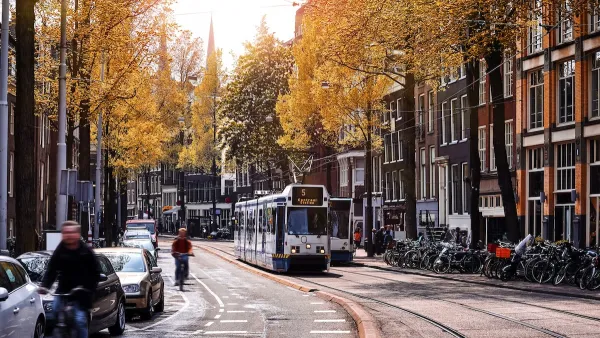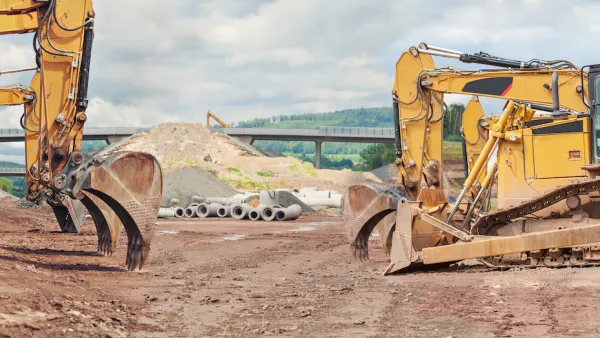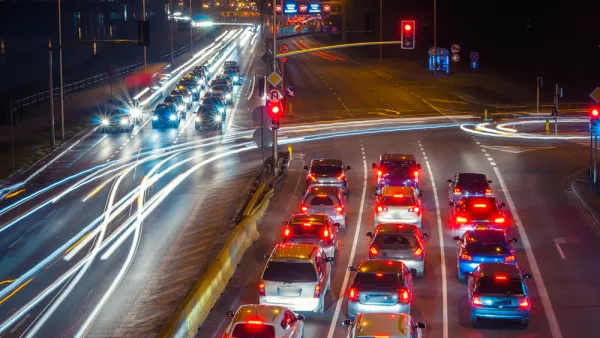A significant portion of vehicle travel consists of chauffeuring: additional travel to transport a non-driver. The new Chauffeuring Burden Index calculates its direct and indirect costs. Why do these costs receive such little attention in planning?

One of the burdens of living in an automobile-dependent community is the significant amount of time and money that motorists must devote to chauffeuring non-drivers, including adolescents and adults with disabilities or low incomes who would travel independently if they had better transport options. This additional vehicle travel imposes direct costs on drivers, and increases external costs including traffic and parking congestion, infrastructure costs, traffic accident risk and pollution emissions. Travel surveys suggest that 5-15% of total personal motor vehicle travel consists of chauffeuring.
This is a transportation planning issue because chauffeuring costs are affected by the quality of mobility and accessibility options available. In compact, multi-modal communities, non-drivers can travel independently for most trips and so impose much lower chauffeuring burdens than in automobile-dependent communities. As a result, everybody can benefit from improving mobility and accessibility options, including people who never use them but benefit from reduced chauffeuring traffic.
This is not to ignore chauffeuring benefits. Time spent chauffeuring is an opportunity for to socialize; for some families it is the most common time for members to talk. However, the ability to socialize is limited since drivers can only give partial attention and have minimal eye contact with passengers. Other travel modes (walking, cycling and public transit) provide equal or better opportunities to socialize. The fact that chauffeuring rates are much lower in communities with better transport options compared with automobile-dependent communities indicates that users consider a significant portion of chauffeuring undesirable. Given better mobility and accessibility options, chauffeuring would not disappear, but it would probably decline significantly compared with current patterns in automobile-dependent communities.
Despite its significance, there is little published research on this issue, and no standard way to calculate chauffeuring burdens and the savings and benefits from improved mobility and accessibility options. I hope to change that.
My new paper, Evaluating Household Chauffeuring Burdens: Understanding Direct and Indirect Costs of Transporting Non-Drivers, submitted for presentation at next year’s Transportation Research Board Annual Meeting, develops a Chauffeuring Burden Index which can be used to quantify chauffeuring costs and therefore the savings and benefits of transport improvements that reduce this vehicle travel.
The Index takes into account the ratio of independent non-drivers (people who could travel independently if they have suitable transport options) to drivers, their vehicle trip generation rates, the portion of these trips that require chauffeuring, an empty backhaul factor (the portion of chauffeured trips for which the driver returns directly home), and average trip length.
This analysis indicates that in automobile dependent communities, chauffeuring costs often exceed congestion costs. This raises an interesting question: why do chauffeuring costs receive so much less consideration than congestion costs in transportation planning? A feminist perspective could argue that this reflects the tendency of men tend to bear proportionately more congestion costs and less chauffeuring burdens than women, and male dominance in the planning process. Another perspective emphasizes the changing transport planning paradigm, which recognizes a wider range of planning objectives and transportation improvement options, besides simply increasing motor vehicle traffic speeds.
Whatever the reason, it is time to account for these impacts in transport planning. Inadequate mobility options imposes significant costs on non-drivers, who are deprived of independent mobility, on drivers who bear chauffeuring burdens and additional direct costs, and society which bears increased external costs including congestion, accidents and pollution. We now have a tool for incorporating these impacts into transportation planning decisions.
The Chauffeuring Burden Index is a new concept; please let me know what you think. How can it be improved? How should it be applied? Is there previous research or useful data on this subject that I overlooked?
For More Information
AA Insurance (2008), Parents Moonlight As Unofficial Taxi Drivers And Lose A Potential £3,000 Chauffeuring Kids, The Automobile Association.
Adolescent Mobility Health Consortium, University of Otago, Dunedin, New Zealand.
FHWA (2010), Livability in Transportation Guidebook: Planning Approaches that Promote Livability, Federal Highway Administration.
Malia Jacobson (2013), The Sandwich Generation: Raising Kids, Caring for Parents, ParentMap.
Todd Litman (2013), “The New Transportation Planning Paradigm,”ITE Journal, Vo. 83, No. 6, pp. 20-28.
Noreen McDonald (2005), “Does Residential Density Affect the ‘Travel’ Gender Gap?,”Research on Women’s Issues in Transportation, Transportation Research Board, pp. 68-76.
Catherine O’Brien, Subha Ramanathan, Richard Gilbert and Arthur Orsini (2009), Youth & Sustainable Transportation: A Review of the Literature, The Centre of Sustainable Transportation, University of Winnipeg.
Asha Weinstein Agrawal, et al. (2011), Getting Around When You’re Just Getting By: The Travel Behavior and Transportation Expenditures of Low-Income Adults, Mineta Transportation Institute.

National Parks Layoffs Will Cause Communities to Lose Billions
Thousands of essential park workers were laid off this week, just before the busy spring break season.

Retro-silient?: America’s First “Eco-burb,” The Woodlands Turns 50
A master-planned community north of Houston offers lessons on green infrastructure and resilient design, but falls short of its founder’s lofty affordability and walkability goals.

Delivering for America Plan Will Downgrade Mail Service in at Least 49.5 Percent of Zip Codes
Republican and Democrat lawmakers criticize the plan for its disproportionate negative impact on rural communities.

Test News Post 1
This is a summary

Test News Headline 46
Test for the image on the front page.

Balancing Bombs and Butterflies: How the National Guard Protects a Rare Species
The National Guard at Fort Indiantown Gap uses GIS technology and land management strategies to balance military training with conservation efforts, ensuring the survival of the rare eastern regal fritillary butterfly.
Urban Design for Planners 1: Software Tools
This six-course series explores essential urban design concepts using open source software and equips planners with the tools they need to participate fully in the urban design process.
Planning for Universal Design
Learn the tools for implementing Universal Design in planning regulations.
EMC Planning Group, Inc.
Planetizen
Planetizen
Mpact (formerly Rail~Volution)
Great Falls Development Authority, Inc.
HUDs Office of Policy Development and Research
NYU Wagner Graduate School of Public Service






























